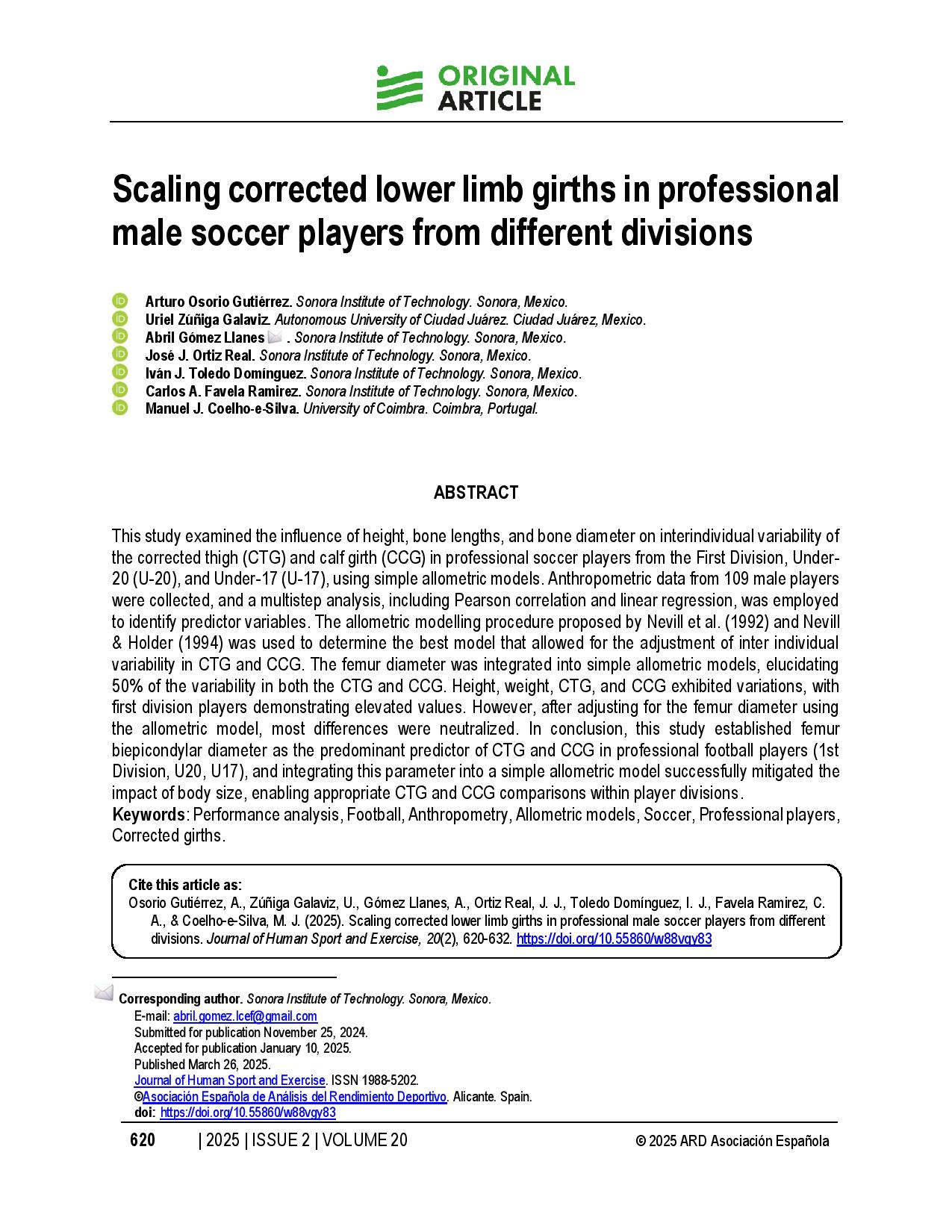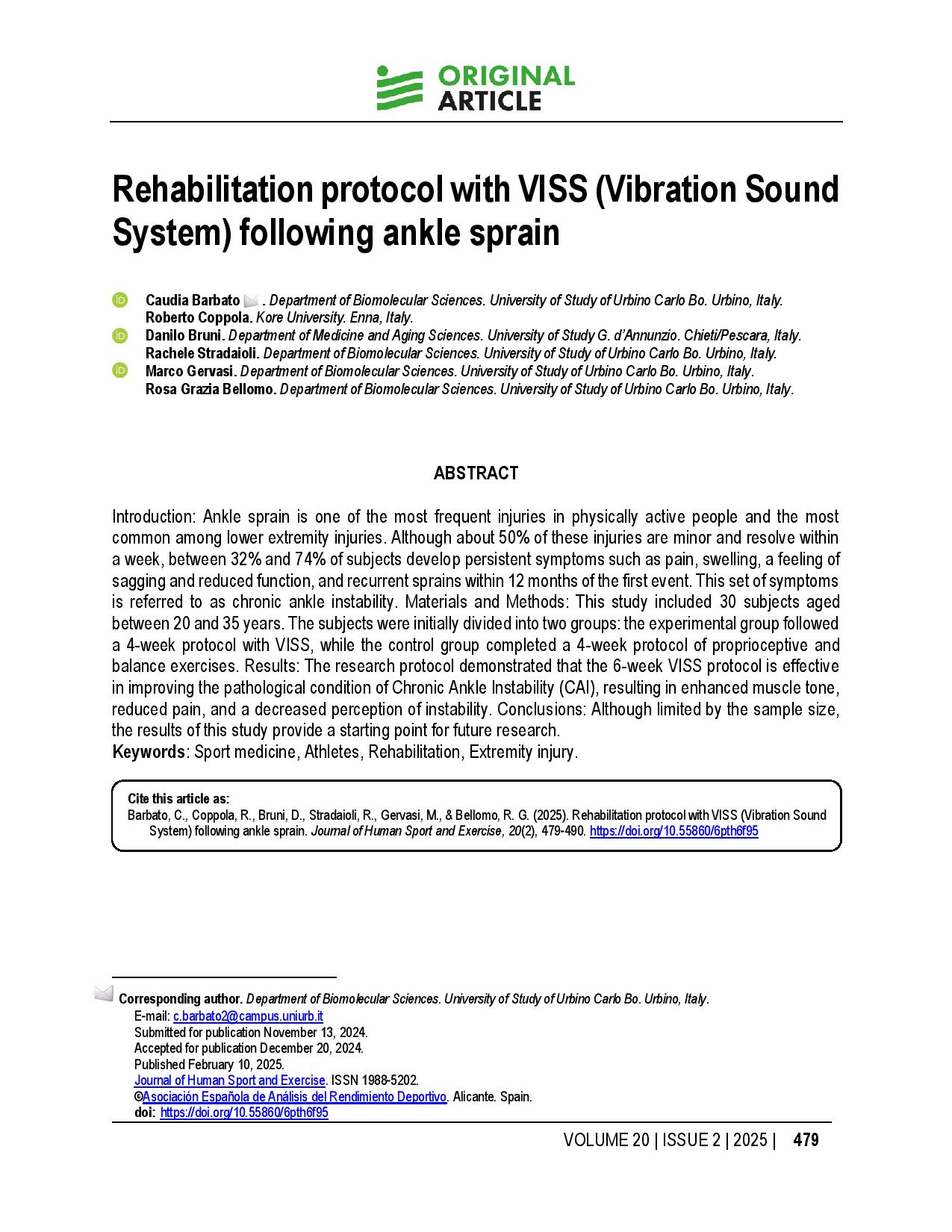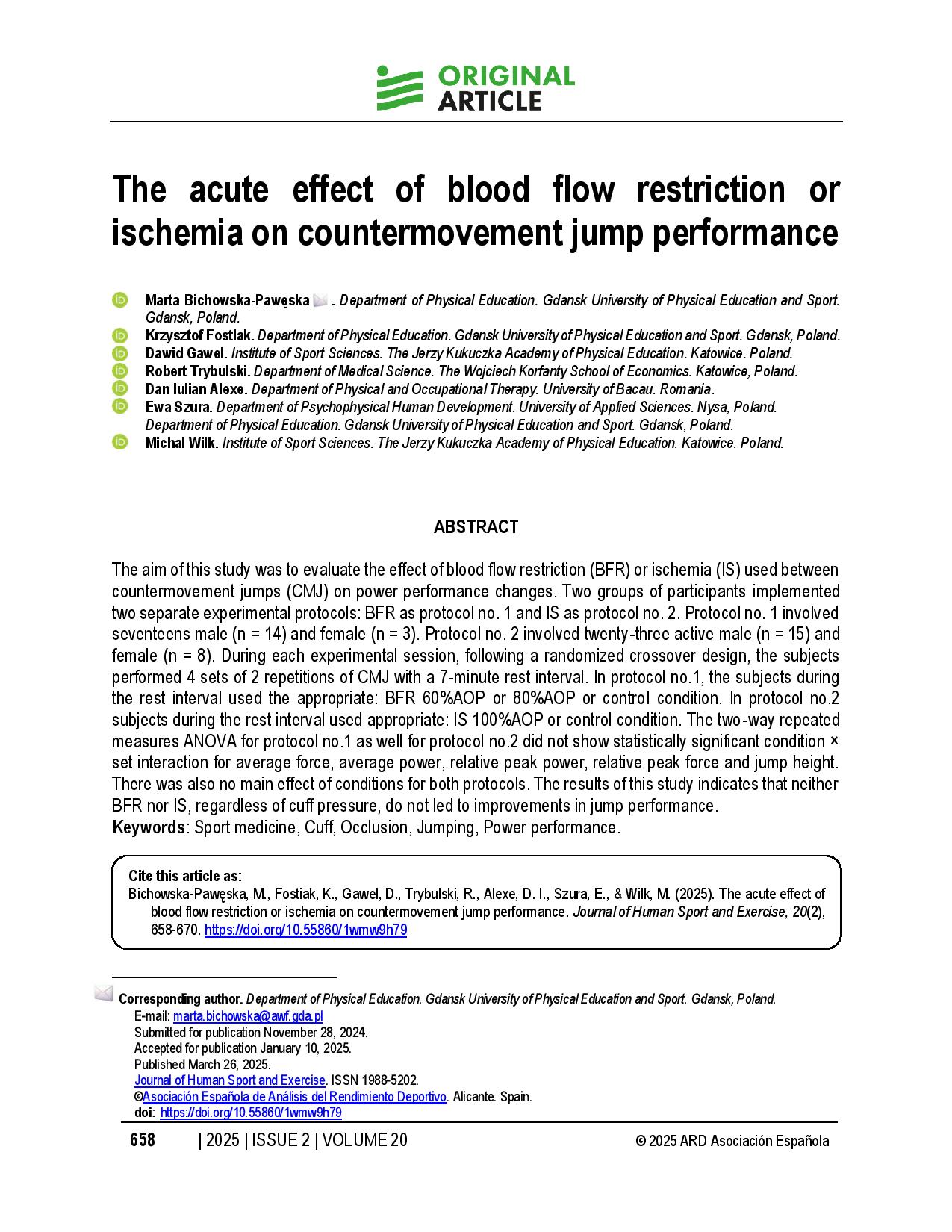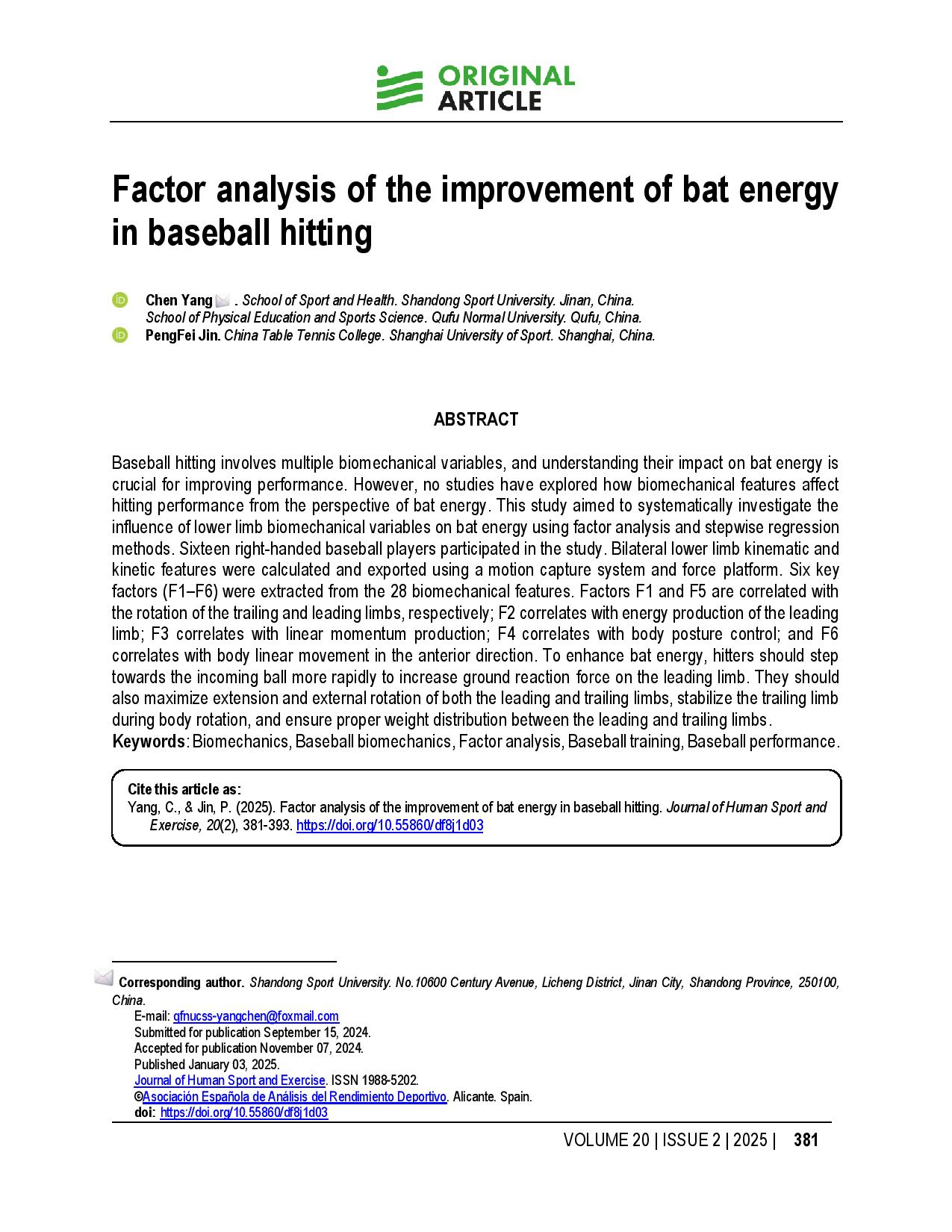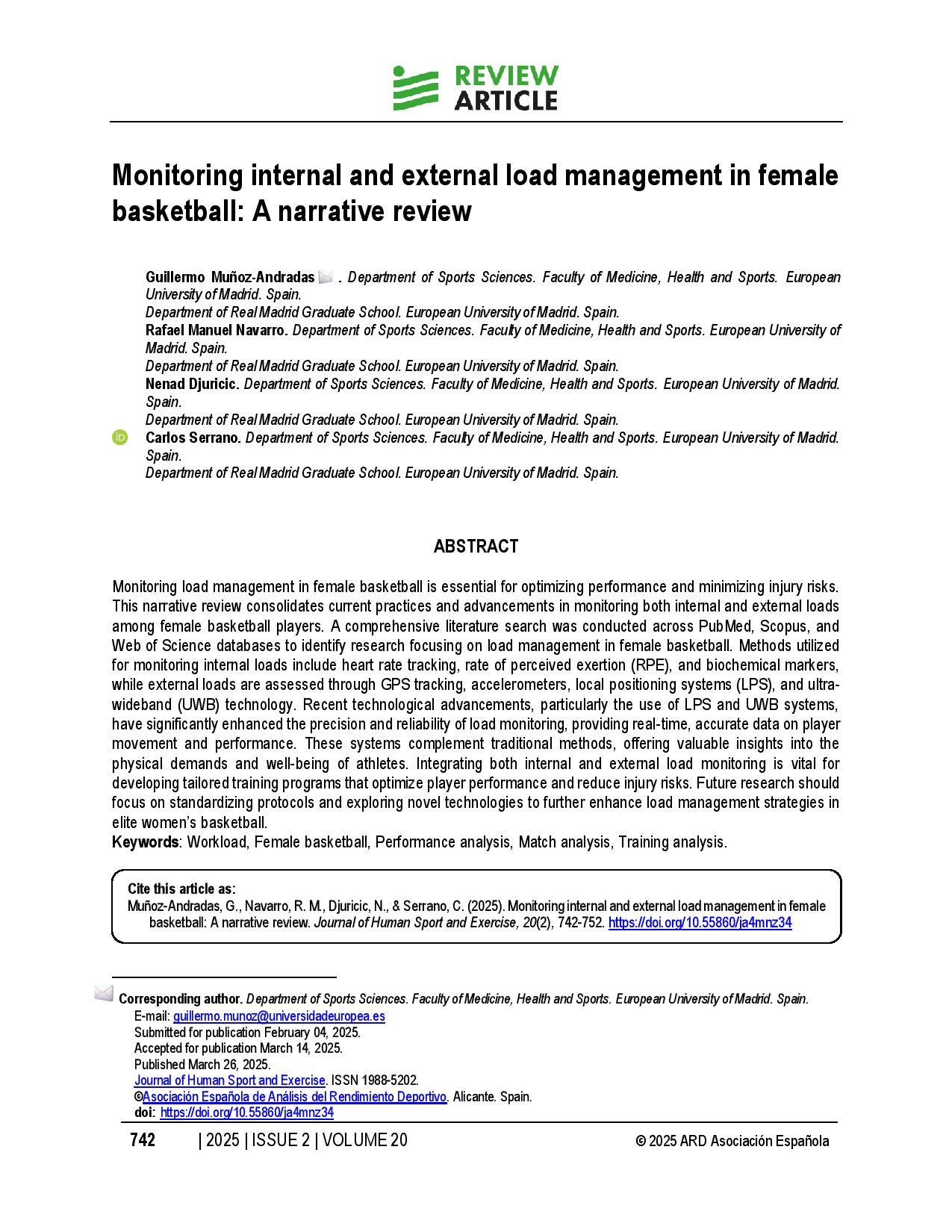
From 1 April 2024, JHSE is published by the Spanish Association of Sports Performance Analysis.
(We invite you to read the Letter from our Honorary Editor)
This will not represent any substantial change in our Editorial Policy for authors.
Check this website for more information and to submit articles from 1 April.
All previously published issues will continue to be available through the following link on our website.
Current Issue
Vol. 20 No. 2 (2025): Seventieth Issue









